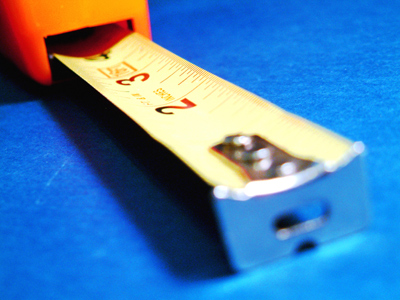Welcome to learning about geometry. Did you know that geometry is also known as a science. In fact, it is one of the oldest sciences. For centuries, it was the way that celestial bodies in the heavens were mapped. This is because geometry is concerned with size, shape and relative positions of figures that have properties of space. In fact, the word geometry is Greek and means “earth measurement”.
The measurement of space moved geometry into the mathematical field. In its simplest form, geometry is based upon mathematical building blocks from which mathematical problems are then built.
Geometry has three building blocks: points, lines and planes. Everything else in geometry will build off of these three blocks.
A point is a single location in space. It could be a pivotal corner in a room, it could be a button on a shirt or it could be a light switch on a wall. In addition, wherever two lines intersect one another, that exact place where the lines intersect is known as a point. Through any two points there is exactly one line.
A line is an indication of distance that continues indefinitely in two different directions and is always straight – it is never curved.
A plane is any flat surface such as a floor or a wall or a piece of paper. The intersection of two planes creates a line.
Together, points, lines and planes are “undefined” which simply means that they have no thickness nor any actual size. However, they are used to determine thickness and size. They can be whatever we assign to them such as stated above when we said a point could be button on a shirt or, it could be a light switch on a wall. Basically, a point is a point of reference from which to start or finish or compare.
Defining a Point
When defining something as a point in geometry a dot (•) is used to symbolize the point followed by a capital letter such as •A, •B and •C (point A, point B and point C).
Defining a Line
When defining a line in geometry you draw a line that has an arrow on both ends to show that the line goes on indefinitely in both directions and then you define the area you want to measure on the line by placing a point at the beginning of where you want to start measuring and a point at the end of where you want to start measuring. Just as mentioned above, the points must be accompanied by a capital letter. For example, if you have a point A (•A) at the beginning of your measuring on the line and a point B (•B) where it ends, the line will be named Line AB.
Defining a Plane
Planes extend in all directions and, like a line, are indefinite. When you name a plane, you name it with three points such as •L, •M and •N. Through any three non-collinear points there is exactly one plane.
In geometry we also have what are referred to as collinear points and coplanar points. They are among the many new geometry terms that you will become quite familiar with as you advance in your geometry studies.
A collinear point refers to all of the points that are located on the same line.
A coplanar point refers to all of the points that are contained within the same plane.
A segment of a line is the section of the line that is between two specified end points on that line. For example, if you have a point C (•C) and a point D (•D) on a line, the portion of the line that is located between point C and point D is known as a segment. A segment is NOT indefinite as it does have a beginning and an end.
Another geometry term is that of a ray. A ray is the portion of a line where you have a point on one end to show that the line stops in one direction but in the opposite direction an arrowhead is placed at the end of the line to indicate that the line goes on indefinitely. Note that the line that goes on indefinitely always points to the right. It never points to the left in a ray.
In geometry, an angle is a figure that is formed by two rays that join at a common point. For example, ray AB extends in one direction and ray AC extends in another direction (although not in the exact opposite directions for that would be a line, but in a direction which will create an angle) and both ray AB and ray AC share the point A. When two rays share a point, the point is referred to as a vertex. So point A is a vertex.
Another term that you will become very familiar with is that of the Isosceles Triangle. The Isosceles Triangle is a triangle that has two equal sides and two equal internal angles.
Again, as you move forward through geometry you will encounter many, many more terms, many of which you are already familiar with, but this quiz contains your building blocks and your foundation from which all geometry problems will branch out from. So, before working on any actual problems, become familiar with the terminologies and know what each term is referring to. To help you to remember, look at the following ten questions and see just how much of the building blocks and geometrical terminology words you already know. Then feel free to revisit this quiz time and time again to refresh your memory of the very basics of geometry.








